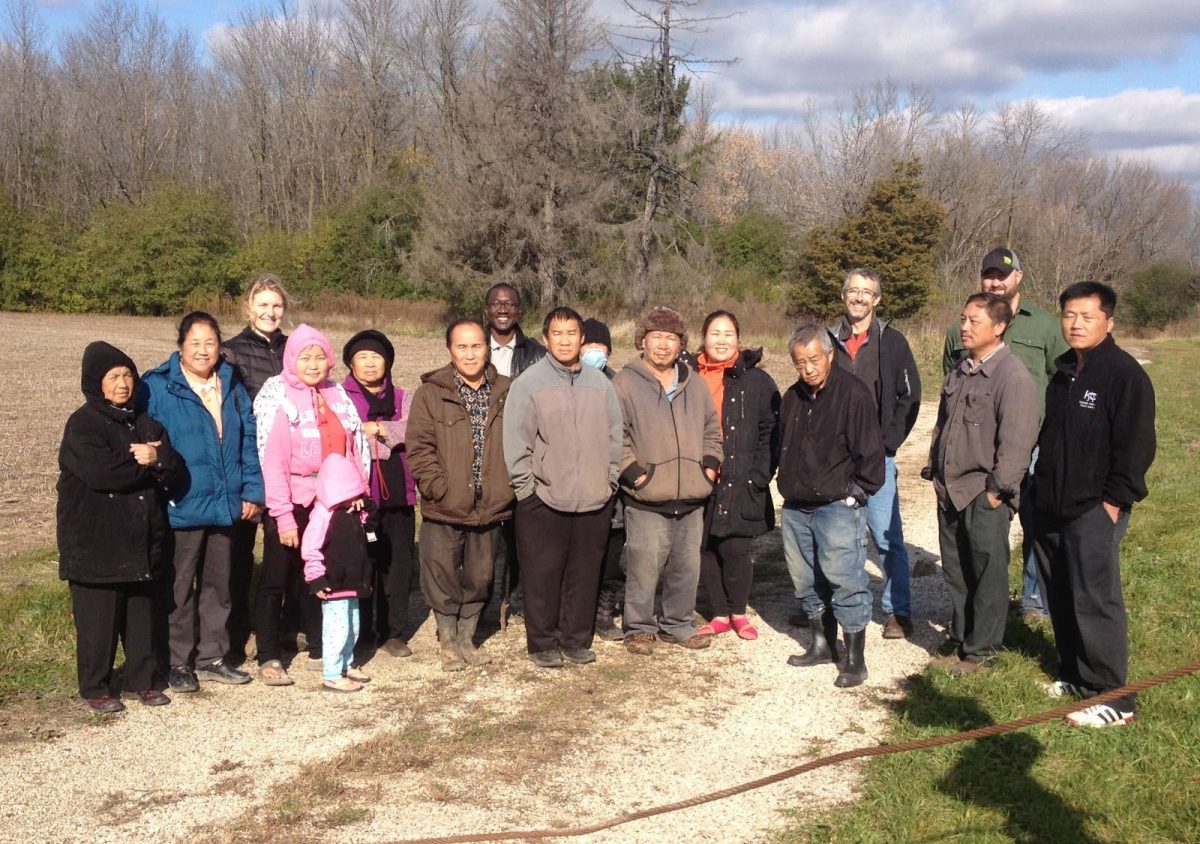
The HMoob community plays a significant role in Wisconsin, with a growing presence and impact on the state’s demographics, economy, and cultural landscape. This summary highlights key data from the latest report by the Applied Population Laboratory at the University of Wisconsin-Madison, which provides a detailed overview of the HMoob population in Wisconsin.
HMoob Population Centers
The HMoob population in Wisconsin has seen steady growth over the decades. As of 2020, Wisconsin had the third-largest HMoob population in the United States, with 59,238 individuals. The largest HMoob communities are found in Milwaukee County (13,653), Marathon County (7,028), and Sheboygan County (5,229). Additionally, significant HMoob populations are present in Dane County (4,947), Brown County (4,356), and Outagamie County (3,826). These areas represent the primary population areas, underscoring the importance of focusing community projects and resources in these regions to support the HMoob community effectively.
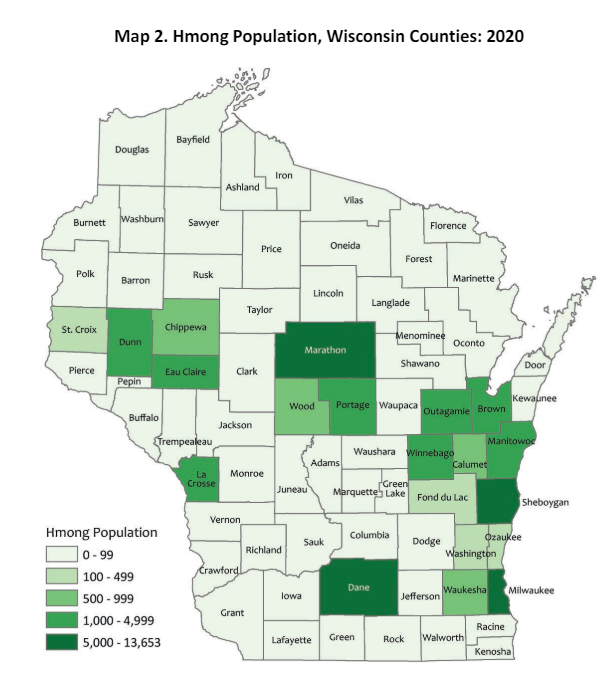
Labor Force and Employment
The labor force participation rate among the HMoob in Wisconsin has increased significantly in recent years. In 2020, 72% of the HMoob population aged 16 and over were employed, compared to just 22% in 1990. Manufacturing is the leading industry for HMoob workers, employing 38% of the HMoob workforce, followed by educational services, healthcare, and social assistance sectors.
HMoob Farmers
Although the report shows that only 2% of HMoob workers are employed in agriculture, forestry, fishing, hunting, and mining, this small percentage represents an important segment of the HMoob community that relies on farming for their livelihood. Anecdotal evidence suggests that this number may be underreported. Growing diversified vegetables is a way of life and part of HMoob growers’ livelihoods, so many do not see it as a business and therefore are not accustomed to recordkeeping. These farmers face unique challenges, including language barriers, limited access to resources, and the need for culturally relevant agricultural education and support. Targeted programs and resources tailored to HMoob farmers can help address these challenges and promote sustainable farming practices within the community.
Language and Education
Language and education data reveal critical insights for developing educational content and programs. While 83% of HMoob individuals who do not speak English at home report speaking English well or very well, there remains a significant portion, especially among older adults, who have limited English proficiency. Educational attainment has improved, with 21% of HMoob adults holding a bachelor’s degree or higher, up from 13% eleven years prior. However, 22% of HMoob females aged 25 and older have not completed any schooling, highlighting the need for continued educational support and resources. This data supports the need for program content to be available in both HMoob and English to cater to the varying levels of English proficiency within the community.
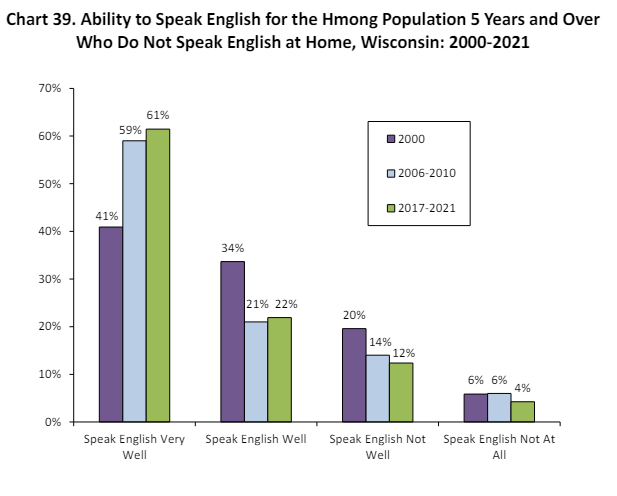
Grant Application Narrative
The data presented justifies the need for continued and expanded support for the HMoob community in Wisconsin, especially for HMoob farmers. Focusing on the largest population centers like Milwaukee, Marathon, and Sheboygan counties ensures that resources are directed where they are most needed. Programs and initiatives should aim to make resources more accessible to the HMoob community, providing agricultural education, access to funding, and culturally relevant support services. These efforts are essential for promoting sustainable farming practices and economic stability within the HMoob community.
For more information on specific grants, programs, and resources available to the HMoob community, please visit the following links:
- Wisconsin Hmong/HMoob Growers Facebook Page
- Wisconsin Hmong/HMoob Growers Discussion Group
- HMoob American Farmers Association (HAFA)
Join us in supporting the HMoob community and ensuring their contributions continue to enrich Wisconsin.

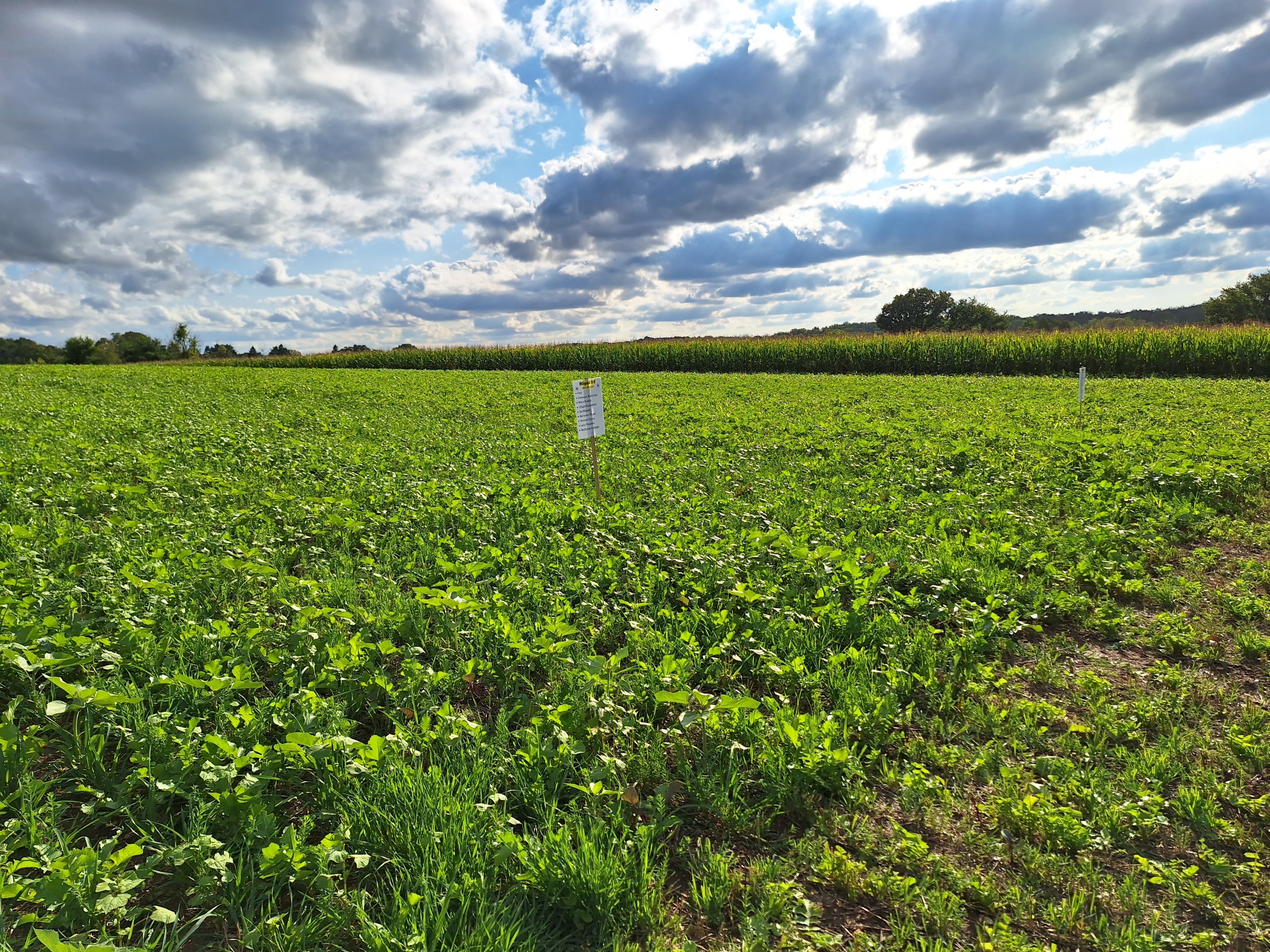
 ▶ Watch: Production Records: Planting & Harvesting – Recordkeeping for Farmers Who Speak HMoob
▶ Watch: Production Records: Planting & Harvesting – Recordkeeping for Farmers Who Speak HMoob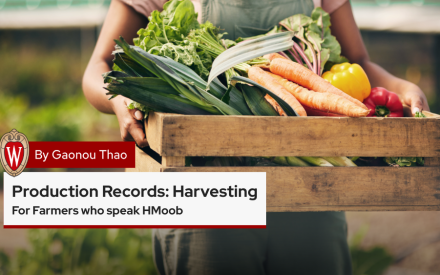 ▶ Watch: Production Records: Harvesting – Recordkeeping for Farmers Who Speak HMoob
▶ Watch: Production Records: Harvesting – Recordkeeping for Farmers Who Speak HMoob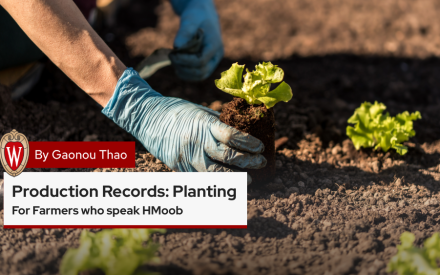 ▶ Watch: Production Records: Planting – Recordkeeping for Farmers Who Speak HMoob
▶ Watch: Production Records: Planting – Recordkeeping for Farmers Who Speak HMoob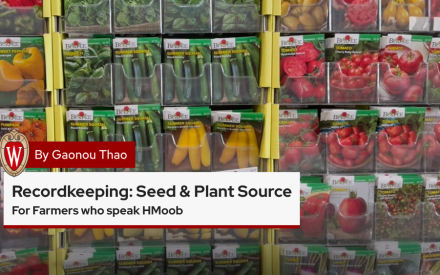 ▶ Watch: Seed & Plant Source – Recordkeeping for Farmers who speak HMoob
▶ Watch: Seed & Plant Source – Recordkeeping for Farmers who speak HMoob


